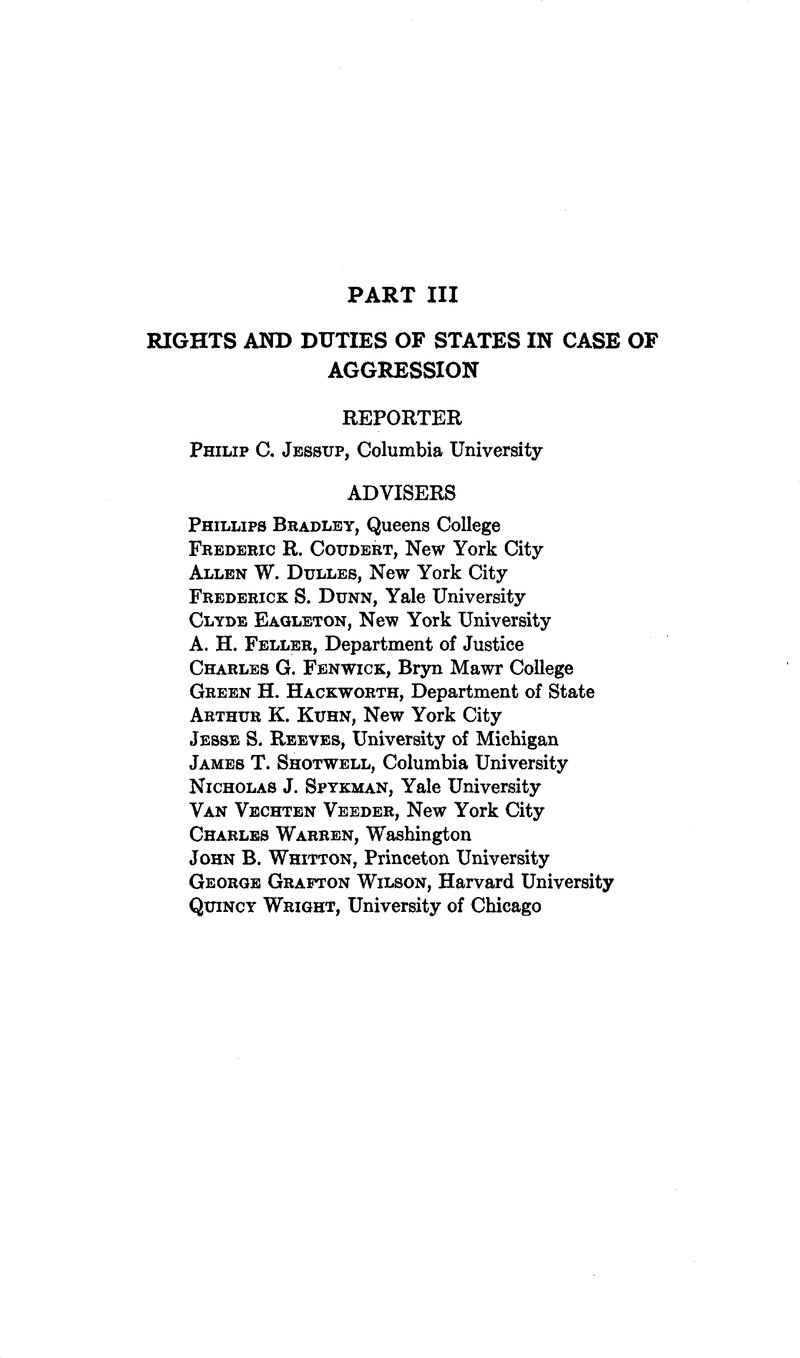No CrossRef data available.
Published online by Cambridge University Press: 12 April 2017

page 824 note 1 The total is taken from various lists such as those in the Twelfth Annual Report of the Permanent Court of International Justice ( 1936), pp. 108 and 110, and the list to be found in Advisory Committee on Traffic in Opium and Other Dangerous Drugs, Annual Report of Governments on the Traffic in Opium and Other Dangerous Drugs for the Year 1936, League Doc. C. 241. M. 140.1938. XI. Nepal and the Holy See, which are not included in either of these lists, have adhered to the Proas-Verbal of November 6, 1936, which embodies the rules on use of submarines which were contained in the London Treaty for the Limitation and Reduction of Naval Armament of April 22, 1930.
page 825 note 1 “Whereas the Pact is a multilateral law-making treaty whereby each of the High Contracting Parties makes binding agreements with each other and all of the other High Contracting Parties, and
“Whereas by their participation in the Pact sixty-three States have abolished the conception of war as a legitimate means of exercising pressure on another State in the pursuit of national policy and have also renounced any recourse to armed force for the solution of international disputes or conflicts:
“(1) A signatory State cannot, by denunciation or non-observance of the Pact, release itself from its obligations thereunder.
“(2) A signatory State which threatens to resort to armed force for the solution of an international dispute or conflict is guilty of a violation of the Pact.
“(3) A signatory State which aids a violating State thereby itself violates the Pact.
“(4) In the event of a violation of the Pact by a resort to armed force or war by one signatory State against another, the other States may, without thereby committing a breach of the Pact or of any rule of International Law, do all or any of the following things:
(a) Refuse to admit the exercise by the State violating the Pact of belligerent rights, such as visit and search, or blockade, etc. ;
(b) Decline to observe towards the State violating the Pact the duties prescribed by International Law, apart from the Pact, for a neutral in relation to a belligerent;
(c) Supply the State attacked with financial or material assistance, including munitions of war;
(d) Assist with armed forces the State attacked.
“(5) The signatory States are not entitled to recognise as acquired de jure any territorial or other advantages acquired defacto by means of a violation of the Pact.
“(6) A violating State is liable to pay compensation for all damage caused by a violation of the Pact to any signatory State or to its nationals.
“(7) The Pact does not affect such humanitarian obligations as are contained in general treaties, such as The Hague Conventions of 1899 and 1907, the Geneva Conventions of 1864, 1906 and 1929, and the International Convention relating to the Treatment of Prisoners of War, 1929.” International Law association, Report of the 88th Conference, p. 66.